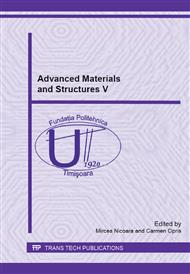p.279
p.283
p.288
p.294
p.298
p.304
p.310
p.316
p.322
Influence of the Electric Field Voltage on the Microhardness of the Layers Coated by Thermal Spraying
Abstract:
This study focuses on the analysis of the electric field voltage influence on the microhardness of the layers coated by thermal spraying. Based on the fact that the loads that are oppositely signed are attracted, an electric device of electric field generating in alternating current is developed, the electric field being generated between the metalizing gun and the work piece. Any metallic body that crosses the electric field is loaded with electric loads, which are yielded by an electric discharge when meeting the oppositely signed load. Thus, the physical and chemical properties of the layers coated by thermal spraying are improved by enhancing the powders displacement speed and by the appearance of micro weldings at the impact between the powder and the metalizing piece. After the samples analysis, an improvement of the diffusion zone is noticed and also an increasing of the microhardness for the samples at which the following voltages are used U = 30; 50; 70 [. In order to achieve the experimental samples, the CastoDyn DS8000 thermal spraying unit, the standard metallization module SSM 10 and the nickel based powder ProXon 21021 were used.
Info:
Periodical:
Pages:
316-321
Citation:
Online since:
August 2014
Authors:
Price:
Сopyright:
© 2014 Trans Tech Publications Ltd. All Rights Reserved
Share:
Citation:


